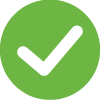- Created by Suchi Govindarajan, last modified by MartinW on Jun 13, 2018
You are viewing an old version of this page. View the current version.
Compare with Current View Page History
« Previous Version 7 Next »
https://help.myob.com/wiki/x/B9Y6Ag
How satisfied are you with our online help?*
Just these help pages, not phone support or the product itself
Why did you give this rating?
Anything else you want to tell us about the help?
Accountants Enterprise only
The user interface is a browser for the MYOB application ledgers comprising a:

The menu options can be managed depending on a user's security level. Refer to Menu Level Security (MLS) Setup.
Work area
By default the Work area displays the list of application Ledgers. Users with necessary security level, are able to change the appearance of the work area, refer to User Accounts. Depending on the settings selected for the Start option on the Preferences tab under User Accounts, the work area will open showing:
List of application ledgers (this is the default after installation)
Folders,
a selected folder,
page setups,
Your browser list may appear differently depending on the view setup by selecting View > Folder View. Refer to The Folder View Window.
Menu Bar
The menu bar provides options according to your security level:
The standard user security level provides these menus:
File, refer to The File Menu
Edit,
View, refer to Licence status
Tools, refer to Integrity check and Calendar
Help
In addition to these the Supervisor level security has access to:
Manage, refer to The Manage Menu.
For the standard user some menu items have restricted access.
Status Bar
As can be seen in this sample, the status bar shows:

The current version of the software.
Double the page setup to open the Select Page Setup window to select a different page setup.
Double click the Time to open the Date/Time Properties window.
Double click the CAPS area to toggle CAPS on and off.
Double click the NUM area to toggle NUM on and off.
The Navigation Bar
The navigation bar is turned on or off from the View menu and provides access to:
Administration
The Administration section of the navigation bar provides access to:
These functions can also be accessed via the pull-down menus.
The options displayed in the Administration section cannot be customised.
Favourites
You can add up to 16 shortcuts to frequently used ledgers to a customised list of Favourites.
To do this, simply drag and drop a ledger to add it to your list of Favourites
From your Favourites list, right click on the shortcut to be removed and click Remove.
The shortcut to the ledger no longer appears in your Favourites list.
My Folders
By default, My Folders has two options:
Search
Ledgers - Click Ledgers to display a full list of your ledgers in alphabetical order.
The My Folders tab displays the Folder links for the Folder that is open.
The File Menu
The tasks in the File menu differ depending on what is selected from the Navigation bar and the operations you are able to perform depend on your security level. The File menu includes:
New: Creates a new entry of the type listed.
When the ledgers are listed, you may select to create an item (ledger), a shortcut or a folder link. Read:
When creating:
User Accounts refer to User Accounts
Folders, refer to Folder Properties
Page Setups refer to Accessing a Page Setup.
Open: Opens whatever is currently highlighted. That is, if the list of Folders is displayed the highlighted folder is opened.
Alternatively, double click on the entry to open it.- Delete: Highlight the ledger, folder, user account, Page Setup or Folder and click File > Delete. Alternatively, Delete can be selected from the right click menu for any of these components. Your security level will determine whether you can delete certain entries.
Properties: Displays the properties for this ledger, user account, folder, page setup, event log entry etc. Event logs are system generated.
Page Setups: Opens the Select Page setups window and allows you to select a default page setup. The shortcut key is [Ctrl+P]. Refer to How to Add a Page Setup.
Print: Opens the Print index window and allows you to print your Ledger list. You are able to print to the screen, a printer or to a file.
Export: Opens the Ledger Export window and allows you to export the selected ledger to another installation of the software. Refer to How to Export Ledgers .
Backup: Opens the Backup wizard and creates a backup of the currently selected ledger to a chosen backup media. Refer to How to Backup Data .
Restore: Opens the Restore wizard and allows you to restore ledger files from a chosen media to a selected location. Refer to How to Restore a Ledger.
Login as: Opens the Access Gateway window and allows you to login as a different user. Refer to How to Login as Another User.
Exit: Allows you to close the application. Shortcut key [Alt+F4].
The Manage Menu
The Manage menu provides access to administration tasks and is only available to users with a security level of 6. The user SUPERVIS has access to the Manage menu.
The Manage menu includes:
Templates: Opens the Template Maintenance window and allows you to view the properties of an application template. Refer to Templates.
Install: Opens the Product window displaying applications installed (select Tools > Install). You are able to view details relating to the listed products. Refer to Product Installation
Edit Backup label: The details for the backup file label are presented for edit in text letter layout format.
Workstations: This is the list of machine names. Properties and notes may be maintained.
Control: This function maintains General system control properties, Messaging, MLS and Domains. Refer to Extended Features.

 Yes
Yes
 No
No
 Thanks for your feedback.
Thanks for your feedback.